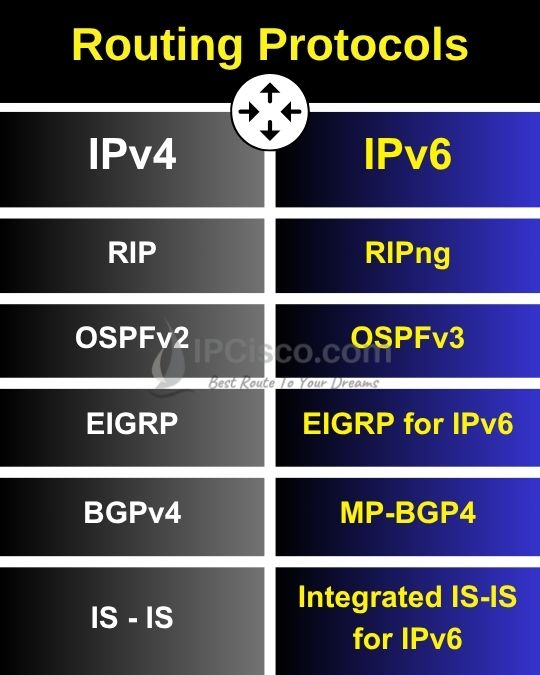- COURSES
- SPECIALS
- BLOG
- MEMBERS
- SHOP
- ABOUT
- ENROLL HERE

Table of Contents
Routing is a process that we route packets in a network as static or dynamic. Static routing is done manually and dynamic routing is done with the help of Routing Protocols. These Routing Protocols can be divided into two according to the IP version. These are IPv4 Routing Protocols and IPv6 Routing Protocols. In IPv6 Course, we will cover all these protocols.
You can also learn How to Enable IPv6 Address on Cisco Routers with Packet Tracer.
We use Routed Protocols like IP with Routing Protocols. For many years, IPv4 is used with routing protocls. But with the expand of IP world, some enhancements are needed. So, a new version of IP has developed. This new IP version caused the development of the new versions of Routing Protocols. This IPv6 cabaple Routing Protocols will be covered in this article.

Firstly, let’s remember the routing protocols used with IPv4. These IPv4 Routing Protocols are given below:
Here, we give the recent routing protocols, so we did not add EGP, IGRP etc.
As we mentioned above, for IPv6 support, newer versions of Routing Protocols introduced. What are the newer versions of this protocols? These IPv6 Routing Protocols are:
Generally, the new IPv6 capable protocols have the characteristics of their previous counterparts. With IPv6, only some new features and some CLI commands are added. Beside, they provide IPv6 address support. In other words, you can sue IPv6 addresses with these protocols.
In the specific IPv6 Routing Protocol lessons, we will focus all IPv6 capable versions of Routing Protocols one by one. We will cover, new features, differences with the previous versions and we will give specific configuration examples for each IPv6 Routing Protocol.
All of the routing protocols can be used with IPv6. Here, the version of this protocl is important. You should use the version thsat supports IPv6.
RIPv2, EIGRP, OSPFv2, BGPv4 and IS-IS are routing protocols developed for IP version 4.
RIPng, EIGRP for IPv6, OSPFv3, MP-BGP and Integrated IS-IS for IPv6 are routing protocols developed for IP version 6.